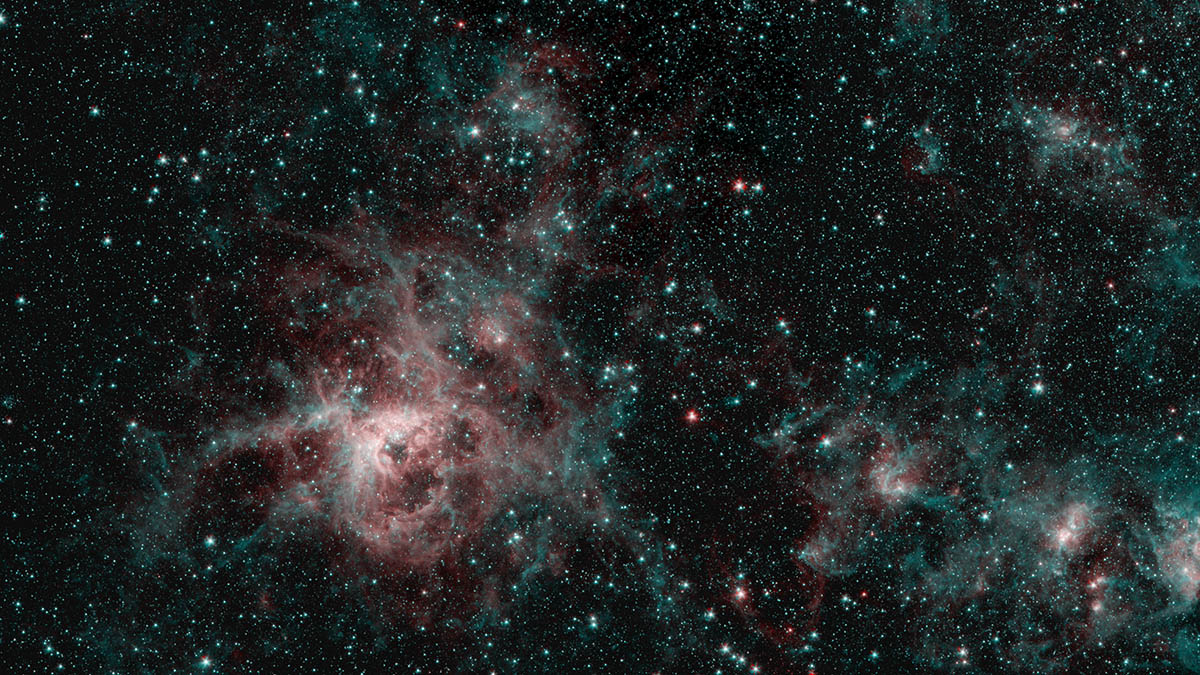This image from NASA’s Spitzer Space Telescope shows the Tarantula Nebula in two wavelengths of infrared light. The red regions indicate the presence of particularly hot gas, while the blue regions are interstellar dust that is similar in composition to ash from coal or wood-burning fires on Earth. (NASA/JPL-Caltech)
Home This image from NASA’s Spitzer Space Telescope shows the Tarantula Nebula in two wavelengths of infrared light. The red regions indicate the presence of particularly hot gas, while the blue regions are interstellar dust that is similar in composition to ash from coal or wood-burning fires on Earth. (NASA/JPL-Caltech) This image from NASA's Spitzer Space Telescope shows the Tarantula Nebula in two wavelengths of infrared light. The red regions indicate the presence of particularly hot gas, while the blue regions are interstellar dust that is similar in composition to ash from coal or wood-burning fires on Earth. (NASA/JPL-Caltech)
This image from NASA’s Spitzer Space Telescope shows the Tarantula Nebula in two wavelengths of infrared light. The red regions indicate the presence of particularly hot gas, while the blue regions are interstellar dust that is similar in composition to ash from coal or wood-burning fires on Earth. (NASA/JPL-Caltech)



